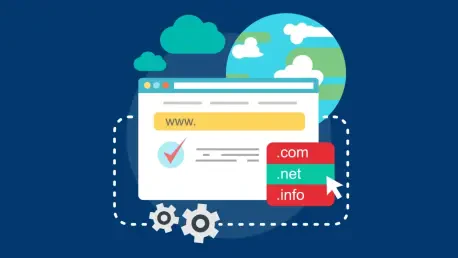In today’s rapidly evolving digital landscape, cybersecurity is no longer limited to just protecting the perimeter of an organization’s network. Traditional security models are insufficient in addressing the complexities of modern, distributed computing environments. With the ever-increasing pace of software delivery and the transient nature of infrastructure, it is crucial to embed security into every aspect of DevOps. This presents a unique opportunity for Site Reliability Engineers (SREs) to integrate zero-trust principles into their practices. By focusing on always verifying identity, device status, and intent before granting access, the zero-trust model challenges the conventional notion of trust within systems, urging a “never trust, always verify” approach to security. This transformation is critically important as SREs navigate the balance between ensuring system availability and incorporating strong cybersecurity measures.
1. Evolving Security in Site Reliability Engineering
Traditionally, security in technology infrastructures was viewed as a separate discipline, often operating in isolation from other development and operational practices. However, in a modern setting where continuous integration and deployment are the norms, siloed security approaches are no longer effective. Site Reliability Engineers are in a unique position to address this challenge by embedding security measures directly into the development lifecycle. By working closely with security teams, SREs can ensure that security is integrated into the DNA of the development process. This means actively managing risks associated with rapidly changing production environments and maintaining robust observability across complex systems.
For example, if a compromised API token is used in a setup without proper zero-trust mechanisms, an attacker could potentially navigate through various microservices undetected. Implementing zero-trust measures requires a fundamental change in how access and interactions within systems are managed. SRE teams must ensure that authentication is required at every step, services maintain identity verification using Transport Layer Security (TLS), and robust policy checks are embedded in workflows. This convergence of security and reliability enables organizations to not only prevent unauthorized access but also streamline security audits and processes.
2. Building a Trustworthy Environment
A pivotal element in adopting zero-trust principles is the concept of policy as code, which parallels the idea of infrastructure as code. This approach allows teams to programmatically define and manage security protocols, ensuring they are consistently enforced during deployment pipelines. By treating policies as code, they become part of the development process, allowing for dynamic enforcement and immediate updates whenever changes are needed. SRE teams gain the advantage of maintaining security without compromising the speed of deployment, as automated systems continuously validate configurations against established policies.
Automated telemetry and observability strategies further contribute to this trustworthy environment by providing real-time insight into systems’ performance and security posture. Through logs, metrics, and traces, teams can quickly identify and address anomalies, reducing the window of opportunity for potential breaches. This observability framework enables security and performance data to coexist within a centralized system, fostering better communication and response strategies among team members. In a zero-trust framework, even minor deviations from expected behavior are flagged as potential threats, ensuring prompt attention and resolution.
3. Operationalizing Zero-Trust in SRE
Embracing zero-trust principles in site reliability engineering does not necessitate an overhaul of existing systems but requires a strategic, incremental approach. One of the primary steps is to enforce identity verification throughout all system operations. Techniques such as evanescent keys, workload identity, and the implementation of a service mesh for mutual authentication are crucial components of this strategy. Moreover, auditing should be an integral part of the system’s operations, with structured logs capturing all access attempts, policy breaches, and any system changes. These logs serve as invaluable resources for both SRE and security teams, enabling continuous assessment and improvement of security measures.
Automation plays a significant role in minimizing unnecessary human involvement by eliminating persistent access keys and using temporary credentials for necessary operations. Additionally, adopting practices such as chaos engineering to simulate potential attacks reinforces the team’s ability to respond effectively to threats. This approach to embedding zero-trust principles within SRE culture places emphasis on treating security events with the same urgency and methodology used for reliability issues. Incorporating security-focused retrospectives encourages an environment where accountability is collective, and continuous improvement is a shared responsibility.
Reinforcing Cybersecurity in Reliability
Traditionally, security within tech infrastructures was seen as a distinct field, often operating separately from development and operational methods. However, in today’s landscape where continuous integration and deployment are commonplace, isolated security strategies are ineffective. Site Reliability Engineers (SREs) are uniquely positioned to bridge this gap by incorporating security into the development lifecycle. By collaborating with security teams, SREs embed security into the core of development, actively managing risks in dynamic production environments and ensuring strong observability in intricate systems.
For instance, if a compromised API token is used without appropriate zero-trust measures, attackers might move undetected through various microservices. To implement zero-trust, a fundamental shift in access and interaction management is required. SRE teams must guarantee authentication at every stage, ensuring services use Transport Layer Security (TLS) for identity verification and integrating robust policy checks within workflows. This fusion of security and reliability not only prevents unauthorized access but also streamlines audits and enhances security processes across the board.









